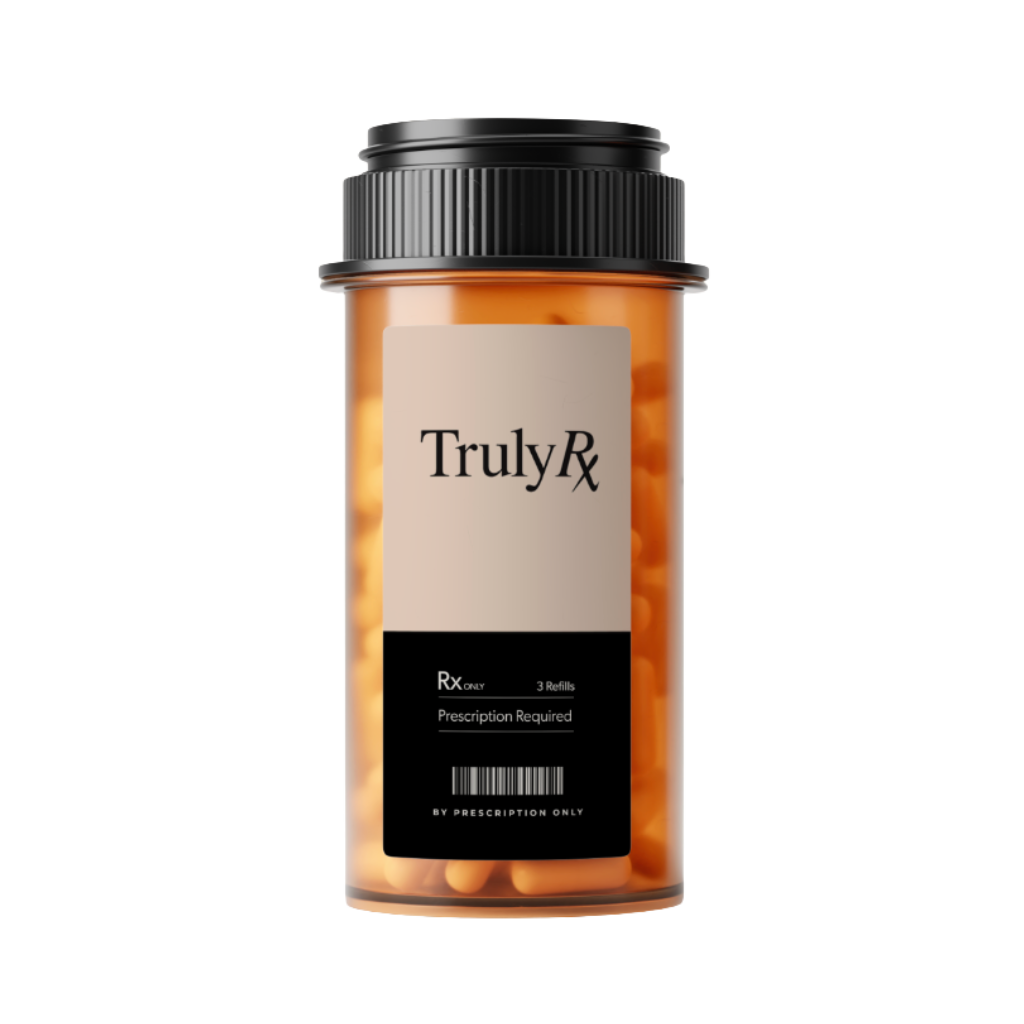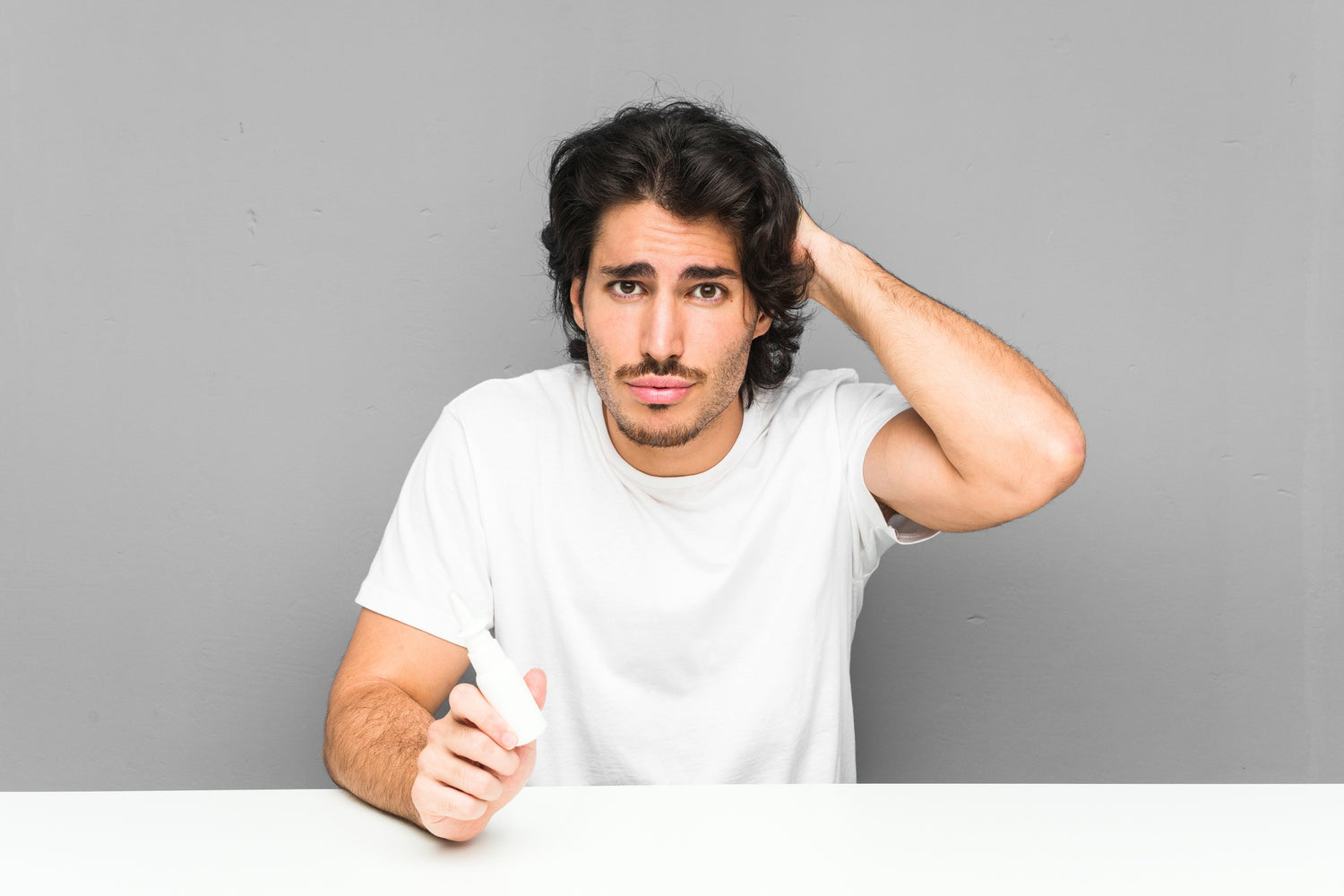Fill in a brief health assessment form, 100% online

Finasteride’s solution to thinning hair
Finasteride / Minoxidil
Couldn't load pickup availability


The primary cause of male-pattern baldness is believed to be genetic and related to hormones, specifically the hormone dihydrotestosterone (DHT).
In individuals with a genetic predisposition to this condition, hair follicles in certain areas of the scalp become sensitive to the effects of DHT. Over time, exposure to DHT causes these follicles to shrink and produce thinner and shorter hair until they eventually stop producing hair altogether.

FINASTERIDE 1MG TABLETS
FINASTERIDE 1.25MG/ MINOXIDIL 1MG CAPSULES
FINASTERIDE 0.1% / MINOXIDIL 6% TOPICAL SOLUTION

✓ Slows or halts hair loss progression
✓ Stimulates regrowth of dormant or miniaturized follicles
✓ Thickens hair and restores scalp density
✓ Suitable for both male and female patients
✓ Daily use produces visible results in 3–6 months
✓ Options for oral or topical application depending on sensitivity and goals




These three medications address the root causes of hair loss through complementary mechanisms:
1. DHT Blockade (Finasteride & Spironolactone)
• Finasteride inhibits 5-alpha reductase, blocking testosterone from converting into DHT (dihydrotestosterone), which causes follicle miniaturization.
• Spironolactone works as an anti-androgen, lowering androgen receptor activity and reducing scalp DHT sensitivity—especially beneficial in women with hormonal hair loss.
2. Follicular Blood Flow (Minoxidil)
• Minoxidil dilates scalp blood vessels, increasing oxygen and nutrient supply to hair follicles. This boosts follicle activity, thickens hair shafts, and encourages regrowth.
3.Custom Compounded Therapy
• Combining these medications in customized oral or topical blends enhances effectiveness while minimizing systemic side effects. Formulations are dermatologist-designed for men and women.
Finasteride (Oral):
• Decreased libido or erectile dysfunction (1–2%)
• Lower ejaculate volume
• Contraindicated in women of childbearing age (Category X)
• Rare persistent sexual side effects
Finasteride (Topical):
• Scalp irritation, pruritus, or erythema
• Fewer systemic effects compared to oral
Minoxidil (Oral):
• Fluid retention or ankle swelling
• Elevated heart rate
• Hypertrichosis (unwanted body/facial hair)
• Rare: pericardial effusion, chest pain
Minoxidil (Topical):
• Scalp dryness or burning
• Eczema, dermatitis, or redness
Spironolactone (Oral):
• Elevated potassium (hyperkalemia)
• Dizziness, dehydration, or lightheadedness
• Menstrual irregularities
• Breast tenderness or GI symptoms
• Generally well tolerated in monitored doses
• Initial shedding may occur in the first 4–6 weeks
• Visible improvements begin around 3–4 months
• Most patients see significant improvement at 6–9 months
• Full regrowth potential is typically seen at 12 months
• Daily adherence is essential—missed doses reduce efficacy
• Discontinuation can reverse results in 3–6 months
Finasteride 1mg is an oral tablet, prescription medicine that is FDA approved to treat male pattern baldness. At a higher strength of 5mg, Finasteride is FDA approved to treat BPH (Benign prostatic hyperplasia).
Finasteride belongs to a group of drugs called 5-alpha reductase inhibitors. It works by blocking the conversion of Testosterone to DHT by up to 70% and therefore lowers DHT levels in the body and at the scalp. Lowering DHT will allow your hair to start the process of growing back.
Results will begin appearing after 3-4 months but significant results may not be apparent for 6-9 months after starting the medication. Full results are usually seen approximately 1 year after starting treatment with Finasteride and using the medication on a daily basis. Patients who skip treatment days, weeks, or months may find that the medication does not work as effectively and does not produce the results they were expecting.
Finasteride comes as a tablet to take by mouth. It is usually taken once a day with or without food. Take Finasteride at around the same time every day. Follow the directions on your prescription label carefully. Take Finasteride exactly as directed. Do not take more or less of it or take it more often than prescribed by your doctor.
Finasteride is a medication primarily used to treat male pattern hair loss (androgenic alopecia) and enlarged prostate (benign prostatic hyperplasia). Like any medication, it can have potential side effects. The most common side effects of Finasteride include:
It’s important to note that not everyone experiences these side effects, and most people tolerate Finasteride well. If you are prescribed Finasteride, your healthcare provider will monitor your progress and discuss any potential side effects with you. If you notice any troubling side effects while taking Finasteride, it is crucial to discuss them with your doctor as soon as possible.
It is important that women of child-bearing age do not take or handle Finasteride as it may cause birth defects. The most common side effects of Topical Finasteride typically occur on the scalp and may
include:
If you forget to take your daily dose of Finasteride, skip the missed dose and continue your regular dosing schedule. Do not take a double dose to make up for a missed one.
Keep this medication in the original container that you received it in, tightly closed, and out of reach of children. Store it at room temperature and away from excess heat and moisture (not in the bathroom).
Minoxidil is a prescription medication used to stimulate hair growth. Minoxidil widens blood vessels which leads to increased blood flow to hair follicles. This improved blood flow, in turn, enhances the follicles’ function and stimulates hair growth in individuals experiencing hair loss.
Side effects are uncommon at the low doses used to treat hair loss. However, as with all prescription medications, side effects can occur: